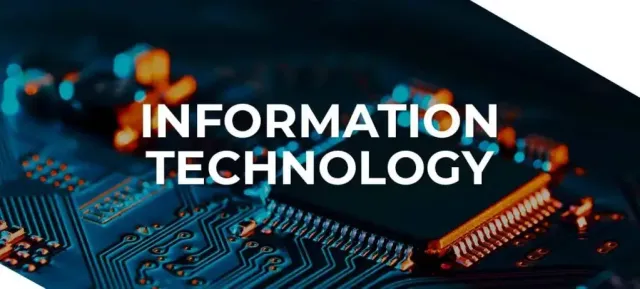World
u231748506 Decoding: What Makes It So Special?
Published
8 months agoon

The enigmatic world of u231748506, a mysterious entity that has captivated the curiosity of many,. What makes u231748506 so special? Join us on a journey as we unravel the secrets behind this intriguing phenomenon and discover its impact on society.
History and Origin of u231748506
Delving into the history and origin of u231748506 reveals a fascinating journey that spans across decades. This enigmatic entity first emerged in the late 20th century, shrouded in secrecy and mystery. Its initial purpose was veiled in ambiguity, sparking intrigue among researchers and enthusiasts alike.
As time progressed, u231748506 gradually gained traction within various sectors, including technology, finance, and even academia. Its versatility and adaptability made it a sought-after tool for those seeking innovative solutions to complex problems. The evolution of u231748506 mirrored the rapid advancements in modern society, positioning itself as a key player in shaping the future landscape.
The origins of u231748506 may be rooted in anonymity, but its impact is undeniable. As it continues to weave its way through different industries and disciplines, one can’t help but wonder about the driving force behind this enigmatic phenomenon. What lies beneath the surface of u231748506 remains an intriguing mystery waiting to be unraveled.
Features and Characteristics of u231748506
When it comes to u231748506, its features and characteristics are truly exceptional. One of the most notable aspects is its versatility; u-231748506 can be adapted for various purposes, making it a valuable tool in different industries. Its user-friendly interface allows for easy navigation, catering to both beginners and experts alike.
Another key feature of u-231748506 is its robust security measures. With encryption protocols in place, users can trust that their data is safe from unauthorized access. Additionally, the speed and efficiency of u231748506 set it apart from competitors, ensuring a seamless user experience.
Furthermore, the scalability of u231748506 makes it ideal for businesses looking to grow without limitations. Whether you’re a small startup or a large corporation, u231748506 has the capabilities to support your needs. In essence, the features and characteristics of u231748506 make it a standout choice in today’s digital landscape.
The Impact of u-231748506 on Society
The impact of u231748506 on society has been nothing short of transformative. This mysterious entity has captured the attention and curiosity of people worldwide, sparking discussions and debates across various platforms. Its enigmatic nature has led to a surge in interest and intrigue, drawing individuals from all walks of life into its orbit.
With its unique features and characteristics, u231748506 has left an indelible mark on social interactions, technology, and even popular culture. The influence it wields is undeniable, shaping how we perceive information dissemination and online engagement.
As society grapples with the implications of this enigmatic presence, one can’t help but wonder about the long-term effects it will have on our collective consciousness. Will u231748506 continue to push boundaries and challenge norms? Only time will reveal the full extent of its impact; for now, we are left captivated by its allure and mystique.
Unraveling the Mystery: Who is Behind u-231748506?
Curiosity piques as we delve into the enigma that is u-231748506. The question on everyone’s mind is: who lurks behind this cryptic identity? Speculations abound, whispers in cyberspace hint at shadowy figures manipulating strings from the shadows. Is it a lone genius or a clandestine group orchestrating the phenomenon of u-231748506?
Peeling back layers of mystery, we uncover fragments of clues scattered across digital landscapes. Some claim it to be an underground movement challenging societal norms, while others suggest it could be a marketing ploy gone rogue. But amidst the speculation and conjecture, one thing remains certain: the allure of anonymity only deepens our intrigue.
As we navigate through the labyrinth of speculations and theories surrounding u-231748506, one can’t help but wonder about the motives driving its elusive creator(s). Could it be fueled by a desire for disruption or perhaps driven by a deeper purpose yet to surface? The veil shrouding this enigmatic entity only adds to its mystique, leaving us with more questions than answers.
Controversies Surrounding u231748506
u231748506, a mysterious entity that has captured the curiosity of many, is not without its fair share of controversies. One of the most debated aspects surrounding u231748506 is its true intentions. Some believe it to be a force for good, while others suspect darker motives hidden beneath its enigmatic facade.
Another controversy swirling around u231748506 revolves around its origins. The lack of concrete information about who or what exactly is behind this phenomenon has fueled skepticism and speculation among both experts and enthusiasts alike.
Furthermore, there are concerns regarding the potential impact of u231748506 on society at large. As more people become reliant on this enigmatic presence for guidance and information, questions arise about the implications this may have on individual autonomy and decision-making processes.
Despite these controversies, one thing remains certain: u-231748506 continues to intrigue and captivate minds worldwide with its elusive nature and unending mysteries.
Conclusion: The Enduring Legacy of u231748506
The enduring legacy of u231748506 is one that continues to captivate and intrigue us. From its mysterious origins to the significant impact it has had on society, this enigmatic entity has left a lasting impression on all who have encountered it. As we strive to unravel the mysteries surrounding u-231748506, one thing remains clear – its influence will be felt for generations to come. Whether you view it as a symbol of innovation or controversy, there is no denying that u231748506 holds a unique place in our collective consciousness. So, as we ponder the implications and significance of this remarkable phenomenon, let us embrace the curiosity and wonder that u-231748506 inspires within us.

The Transformative World of Information Technology (IT) has become one of the most essential pillars in today’s modern world, reshaping industries, changing the way we communicate, and providing innovative solutions to global challenges. As we delve into the intricacies of IT, it is clear that the field is vast, encompassing various disciplines such as software development, hardware engineering, cybersecurity, data science, and cloud computing. This article provides an overview of IT, its components, impact on society, and emerging trends.
What is Information Technology?
Information Technology refers to the use of systems (especially computers and telecommunications) for storing, retrieving, and sending information. The term encompasses everything from basic computer systems and software applications to complex network infrastructures, digital data storage, and communications technology. In today’s connected world, IT is vital for businesses, governments, and individuals alike to function efficiently and effectively.
Key Components of Information Technology
- Hardware
- Hardware forms the physical foundation of any IT system. This includes computers, servers, networking devices, and other equipment. Hardware is constantly evolving, becoming more powerful, compact, and energy-efficient. Innovations like solid-state drives (SSDs), advanced GPUs, and quantum computing hold great promise for the future of IT.
- Software
- Software comprises the programs and operating systems that run on hardware. Software applications facilitate tasks and enable users to interact with computers, ranging from operating systems like Windows and macOS to applications like word processors, databases, and multimedia editors. Programming languages, software frameworks, and development tools continue to evolve, enabling more sophisticated and scalable applications.
- Networking
- Networking is the backbone of IT, enabling communication between devices and systems across the globe. The development of wireless networks, fiber optics, and the upcoming 5G technology have revolutionized data transmission. Internet protocols (IP), network security protocols, and other infrastructure make global connectivity possible, ensuring data can be shared securely and efficiently.
- Data Management and Storage
- Data is at the heart of IT. Efficient storage, retrieval, and analysis of data are essential in almost every sector. Technologies like relational databases, data warehousing, cloud storage, and data mining enable organizations to handle vast amounts of data and derive insights from it. As data generation grows exponentially, organizations seek more efficient storage solutions, such as cloud computing and distributed storage networks.
- Cybersecurity
- Protecting data and systems from unauthorized access, threats, and cyber-attacks is critical. Cybersecurity encompasses encryption, firewalls, intrusion detection systems, and more. As cyber threats evolve, so too do the techniques used to protect systems. The importance of cybersecurity is underscored by the rising frequency and sophistication of cyber-attacks, driving the need for advanced threat detection, incident response, and ethical hacking.
The Role of IT in Modern Society
Information Technology has a profound impact on modern society. Its applications span various sectors, revolutionizing the way we live and work.
- Business Transformation
- IT has transformed businesses by streamlining operations, enhancing customer experiences, and enabling innovation. From e-commerce platforms to Customer Relationship Management (CRM) systems, IT allows businesses to operate efficiently, reach global markets, and make data-driven decisions. Cloud computing, big data, and artificial intelligence (AI) are some of the tools enabling businesses to improve productivity and achieve competitive advantages.
- Healthcare Innovation
- Healthcare has benefited immensely from IT advancements, leading to improved patient outcomes and more efficient healthcare delivery. Electronic Health Records (EHRs), telemedicine, wearable technology, and predictive analytics are some IT-driven innovations reshaping healthcare. These technologies enhance patient care, reduce errors, and provide healthcare providers with critical insights into patient health.
- Education and E-Learning
- The educational sector has undergone a massive shift with IT integration. Learning Management Systems (LMS), online courses, and digital classrooms enable students to access quality education from anywhere. This democratization of education has bridged geographical and socioeconomic gaps, making learning more accessible and tailored to individual needs.
- Public Sector and Governance
- Governments worldwide leverage IT to enhance service delivery, improve transparency, and foster citizen engagement. E-governance initiatives, digital identity systems, and online portals allow citizens to access government services easily. IT also aids in data-driven policy-making, resource management, and disaster response.
- Social Media and Communication
- IT has revolutionized the way people communicate. Social media platforms, instant messaging, and video conferencing have changed social interactions and business communication. These platforms allow users to share information instantly, fostering a more connected and informed society.
Emerging Trends in Information Technology
The IT industry is dynamic, with innovations constantly emerging. Some of the current trends shaping the future of IT include:
- Artificial Intelligence and Machine Learning
- AI and machine learning are transforming industries by enabling automation, improving decision-making, and providing predictive insights. Applications like chatbots, autonomous vehicles, and recommendation systems are just a few examples. As AI algorithms become more advanced, we expect further integration into daily life and business.
- Internet of Things (IoT)
- IoT involves connecting physical devices to the internet, enabling them to communicate and share data. Smart homes, wearable devices, and industrial IoT are examples where IoT enhances convenience, monitoring, and efficiency. As 5G networks become more widespread, IoT is expected to expand, driving more connected environments and smart cities.
- Blockchain Technology
- Blockchain, the technology behind cryptocurrencies, is gaining traction beyond finance. Its decentralized nature provides secure, transparent, and tamper-proof transactions, making it valuable for applications in supply chain management, voting systems, and healthcare. Organizations are exploring blockchain to enhance trust and accountability in various processes.
- Quantum Computing
- Quantum computing is an emerging field that holds the potential to solve complex problems faster than traditional computers. While still in its infancy, quantum computing promises advancements in fields like cryptography, materials science, and artificial intelligence, with the potential to revolutionize data processing capabilities.
- Cloud Computing and Edge Computing
- Cloud computing has transformed IT by enabling flexible and scalable computing resources over the internet. Organizations can store data and run applications on cloud servers, reducing the need for physical infrastructure. Edge computing, a newer development, brings computation closer to data sources, reducing latency and improving performance for real-time applications.
- Cybersecurity Innovations
- With cyber threats becoming increasingly complex, cybersecurity has seen rapid innovation. The focus is shifting towards proactive threat detection, automated response, and user awareness. Technologies like AI-driven cybersecurity, Zero Trust Architecture, and biometric authentication are becoming essential components of modern cybersecurity strategies.
Challenges Facing Information Technology
Despite its advantages, IT faces several challenges. Data privacy concerns, cybersecurity threats, the digital divide, and the ethical use of AI are prominent issues that need addressing.
- Data Privacy and Security
- Protecting personal data has become a significant concern, especially with the rise of data-driven applications. Regulations like the General Data Protection Regulation (GDPR) in the European Union mandate that organizations handle user data responsibly. However, data breaches continue to occur, emphasizing the need for robust data protection practices.
- Skill Shortages
- As technology advances rapidly, there is a growing demand for skilled IT professionals. However, the supply of qualified workers has not kept pace, creating a skills gap. This shortage highlights the need for better training, upskilling initiatives, and educational programs focused on IT and related disciplines.
- Digital Divide
- While IT provides many benefits, not everyone has equal access to technology. The digital divide – a gap between those with access to IT resources and those without – remains a global challenge. Bridging this gap is essential to ensure that all individuals, regardless of location or socioeconomic status, can benefit from IT advancements.
- Ethics and Bias in AI
- As AI systems become more pervasive, ethical considerations arise regarding bias, privacy, and accountability. AI systems are often trained on historical data, which can introduce biases if not managed carefully. Ensuring that AI is developed and used responsibly is essential for building trust and fairness in IT.
Conclusion
Information Technology is a transformative force that touches nearly every aspect of life today. It powers industries, enables innovation, and provides opportunities for societal advancement. As technology continues to evolve, so too will the possibilities and challenges it brings. From AI and quantum computing to the growth of IoT and blockchain, the future of IT holds vast potential. However, it is crucial to address challenges such as data privacy, cybersecurity, and the digital divide to ensure IT’s positive impact on society
Understanding Religions, practices, and values passed down through generations, providing answers to existential questions and guiding personal and societal moral codes. Religions often serve as spiritual and moral frameworks, influencing law, politics, education, and even the arts. This article explores the core aspects of religion, including its significance, origins, diversity, practices, and evolving role in modern society.
1. The Significance of Religion in Human Life
Religion provides a lens through which many view life’s purpose, moral principles, and the mysteries of existence. For individuals, religion often gives a sense of identity, purpose, and community. Religious beliefs can provide comfort in difficult times, guide ethical decisions, and offer a sense of belonging. At a societal level, religion can act as a unifying force, creating shared beliefs and values that help sustain social cohesion and stability.
In many societies, religious organizations have historically played central roles in education, healthcare, and social services. Religious communities can also serve as networks of support for individuals and families, offering assistance during hardships and celebrations during milestones. Overall, religion impacts individual and collective perspectives on life, death, morality, and beyond.
2. The Origins and Evolution of Religion
Understanding Religions, are as ancient as humanity itself, emerging from early human communities seeking explanations for natural phenomena and existential questions. Early religions often involved animism, the belief that spirits inhabit natural objects like trees, rivers, and mountains. Over time, as societies evolved, religions became more organized, with structured beliefs, deities, and priestly classes.
Understanding Religions, evolved further with the development of agrarian societies and the establishment of civilizations. As trade expanded, religious ideas spread, adapted, and merged. This is evident in the cross-influences between ancient religions in Mesopotamia, Egypt, India, and Greece, which shaped many contemporary religious beliefs. Major world religions such as Hinduism, Buddhism, Judaism, Christianity, and Islam emerged over centuries, each influencing and reshaping cultures and philosophies across regions.
3. Major World Religions and Their Core Beliefs
The world’s major religions vary greatly in their beliefs, rituals, and approaches to spirituality. Here’s a brief overview of some key aspects of major religions:
- Hinduism: One of the oldest religions, Hinduism originated in India and is highly diverse, with multiple gods, philosophies, and practices. It centers on concepts like karma, dharma (duty), and the cycle of reincarnation, with ultimate liberation (moksha) as a spiritual goal.
- Buddhism: Founded by Siddhartha Gautama in the 5th century BCE, Buddhism emphasizes inner peace, compassion, and mindfulness. Its core teachings, known as the Four Noble Truths, highlight the reality of suffering, its causes, and the path to liberation through the Eightfold Path.
- Judaism: Rooted in ancient Israel, Judaism is a monotheistic religion that centers on the covenant between God and the Jewish people. The Torah, or Hebrew Bible, contains its teachings and laws. Jewish practices and festivals are integral parts of the faith, with an emphasis on community and tradition.
- Christianity: Emerging from Judaism, Christianity is based on the teachings of Jesus Christ, whom followers believe to be the Son of God and the Messiah. The religion emphasizes love, forgiveness, and salvation, with the Bible as its sacred text. Christianity has since become the world’s largest religion, with numerous denominations.
- Islam: Islam, founded by the Prophet Muhammad in the 7th century CE, is also monotheistic and centers on submission to the will of Allah (God). Muslims follow the Quran, their holy book, and the Five Pillars of Islam, which include faith, prayer, almsgiving, fasting, and pilgrimage.
4. Rituals, Worship, and Practices
Understanding Religions, rituals and practices vary widely, providing followers with a way to connect with the divine or reinforce community bonds. Worship, prayer, meditation, and chanting are common elements across religions, often practiced both individually and collectively.
- Places of Worship: Temples, mosques, churches, synagogues, and other structures are sacred spaces for religious gatherings. They serve as community centers and sanctuaries for prayer and reflection.
- Festivals and Celebrations: Many religions have annual festivals, such as Diwali in Hinduism, Easter in Christianity, Ramadan in Islam, and Passover in Judaism. These celebrations often commemorate historical events or spiritual milestones, fostering community unity.
- Rites of Passage: Life events, such as birth, marriage, and death, are marked by religious rituals. These rites of passage carry special meaning, guiding individuals through key transitions in life while reinforcing cultural values.
5. Religion and Ethics
Religions provide ethical frameworks that shape moral decisions, often stressing compassion, honesty, and respect. Ethical teachings address how to treat others, responsibilities towards family and society, and the treatment of the environment. For example, the Ten Commandments in Judaism and Christianity, the Eightfold Path in Buddhism, and the Five Precepts in Hinduism are all ethical guidelines with a focus on moral living.
Religious ethics often intersect with law and governance. Many societies have based their legal systems on religious principles, and debates around moral and ethical issues, such as marriage, bioethics, and human rights, are often rooted in religious teachings.
6. Religion in the Modern World
In today’s globalized, multicultural world, religion continues to play a significant role. However, secularism, science, and individual spirituality are increasingly influencing religious belief and practice. Some people identify as spiritual but not religious, seeking personal fulfillment outside traditional organized religions.
Meanwhile, interfaith dialogue and cooperation among religious groups are more common, as diverse communities aim to foster understanding and address shared challenges like poverty, climate change, and human rights. Some religions have adapted their practices and teachings to modern contexts, including issues like gender equality and environmental stewardship.
7. Challenges and Criticisms of Religion
While religion has many positive influences, it is not without criticisms. Religious conflicts, intolerance, and fundamentalism have caused division, violence, and societal harm. History has seen many conflicts rooted in religious differences, such as the Crusades and conflicts in the Middle East. Additionally, religious institutions have faced scrutiny for issues like abuse, discrimination, and resistance to scientific advancements.
Many argue that religion should adapt to evolving societal values to remain relevant. Others believe that the decline in religious adherence in some regions reflects the rise of rationalism, skepticism, and individualism.
8. The Future of Religion
The future of religion is likely to be complex and diverse, with shifts toward personal spirituality, interfaith cooperation, and adaptive practices. As younger generations express new religious identities and redefine spirituality, religions may focus more on community service, ethical issues, and spiritual guidance than on dogmatic beliefs. Technology and globalization may further influence religious practices, with virtual religious services and online spiritual communities becoming increasingly popular.
Conclusion
Religion, with its diverse beliefs, practices, and history, is a cornerstone of human culture and society. It offers individuals and communities a sense of purpose, identity, and belonging while influencing ethical norms and societal structures. As society continues to evolve, religion will likely adapt and reshape, reflecting humanity’s ongoing quest for meaning, connection, and understanding. Through open dialogue, mutual respect, and appreciation for diversity, societies can foster a deeper understanding of the shared values that religions promote, creating a more inclusive and peaceful world
Atomic energy, derived from the controlled release of energy from atoms, has transformed the way we produce power. Known for its high energy density, atomic energy has the potential to power entire cities with minimal fuel compared to conventional sources. But this power also brings significant challenges, including environmental, safety, and waste management concerns. As we move towards sustainable energy, understanding atomic energy’s potential and limitations is essential for shaping its future role in global energy strategies.
What is Atomic Energy?
Atomic energy, or nuclear energy, originates from nuclear reactions, primarily through processes like nuclear fission and fusion. In fission, atomic nuclei split into smaller parts, releasing an enormous amount of energy, whereas fusion involves combining two light nuclei to form a heavier one, also releasing energy. While fusion offers greater energy potential, fission is currently the primary method used in nuclear reactors.
Nuclear energy’s high energy density means it can produce far more power than fossil fuels from a much smaller amount of raw material. For instance, 1 gram of uranium can produce energy comparable to tons of coal.
History and Development of Atomic Energy
Atomic energy has its origins in scientific discoveries of the early 20th century. The discovery of the atom’s structure and radioactive properties led scientists to explore atomic reactions’ immense potential. The turning point came during World War II with the Manhattan Project, which developed the first atomic bombs. After the war, attention shifted toward peaceful applications of atomic energy, leading to the establishment of nuclear power plants in the 1950s and 60s.
Nuclear power grew rapidly due to its promise of abundant, low-emission energy. However, incidents such as the Chernobyl disaster (1986) and Fukushima Daiichi (2011) highlighted the safety risks, slowing growth and leading to stringent regulatory measures.
How Nuclear Power Plants Work
Most nuclear power plants operate on nuclear fission. A typical reactor core contains uranium or plutonium fuel rods. When neutrons collide with these fuel atoms, they split, releasing energy in the form of heat. This heat generates steam, which drives turbines connected to electricity generators, producing power.
The entire process occurs within a highly controlled environment. The reactor core is housed within thick containment structures to prevent radioactive material from escaping, and multiple safety systems are in place to ensure that the reactor can be safely shut down in an emergency.
Advantages of Atomic Energy
- High Energy Output: Atomic energy provides a reliable and large-scale energy source. A single nuclear power plant can produce more electricity than many renewable sources combined, meeting base-load energy demands without interruptions.
- Low Greenhouse Gas Emissions: Unlike coal or natural gas, nuclear power generates minimal greenhouse gas emissions. For countries aiming to reduce carbon footprints, nuclear energy offers a sustainable alternative to fossil fuels.
- Energy Security: With nuclear energy, nations can reduce dependency on foreign oil or gas supplies, offering greater energy security. Countries with limited fossil fuel reserves can invest in nuclear power as a reliable, long-term solution.
- Efficient Land Use: Nuclear power plants require significantly less space than solar or wind farms. This feature makes nuclear power advantageous in areas where land is limited.
Challenges and Risks Associated with Atomic Energy
- Radioactive Waste Management: Nuclear reactions produce radioactive waste, which remains hazardous for thousands of years. Managing and storing this waste safely is challenging, requiring secure facilities that prevent radiation leaks.
- Nuclear Accidents: Incidents like Chernobyl and Fukushima highlight the devastating consequences of nuclear accidents, including radiation exposure and long-term environmental impacts. Such incidents, though rare, have caused public apprehension and led to strict regulatory policies.
- High Initial Costs: Building and maintaining nuclear plants is expensive. From construction to waste disposal, the financial investment is substantial. This upfront cost, coupled with regulatory approvals, makes nuclear energy economically viable mainly in wealthy nations or through significant government subsidies.
- Nuclear Proliferation: The technology and materials used in nuclear power can also be used for nuclear weapons. The risk of nuclear proliferation remains a concern, particularly with regard to safeguarding nuclear materials and technology.
Innovations in Atomic Energy: Nuclear Fusion
While current reactors rely on fission, nuclear fusion holds promise as a cleaner and more abundant energy source. Fusion mimics the sun’s energy production by fusing atomic nuclei rather than splitting them. Theoretically, fusion produces far less radioactive waste and carries fewer risks of meltdown.
Though scientists have made strides in fusion research, achieving stable, controlled fusion that yields more energy than it consumes remains elusive. Projects like ITER (International Thermonuclear Experimental Reactor) aim to demonstrate fusion’s feasibility, and advancements in materials science and plasma physics could soon make fusion power a reality.
Global Usage of Atomic Energy
Today, over 30 countries use nuclear energy to meet a portion of their energy needs. France, for example, derives about 70% of its electricity from nuclear power, showcasing a successful model of nuclear dependency. In the United States, nuclear power provides about 20% of the total electricity supply.
In recent years, several countries have pledged to reduce fossil fuel dependency, sparking renewed interest in nuclear power. Nations like China, Russia, and India are investing heavily in new nuclear reactors, while other countries with existing reactors are exploring options to upgrade and extend the life of their nuclear facilities.
The Future of Atomic Energy: Balancing Power and Responsibility
With growing pressure to transition to low-carbon energy, nuclear power presents a potential solution. However, its future depends on addressing key challenges. Researchers and policymakers are focusing on:
- Advanced Reactor Designs: New reactor models, like small modular reactors (SMRs), offer a safer and more flexible alternative to traditional designs. These reactors produce less waste and are easier to construct.
- Waste Management Innovations: Developing sustainable solutions for radioactive waste is crucial. Technologies such as deep geological storage and transmutation (converting radioactive waste into less hazardous forms) could mitigate waste management challenges.
- International Cooperation: Collaborative projects and shared standards, like those promoted by the International Atomic Energy Agency (IAEA), encourage responsible nuclear development and help ensure that nuclear materials are secured.
- Public Perception and Policy: Public opinion plays a significant role in nuclear energy policies. Governments and industries are working to improve transparency, educate communities, and address safety concerns to foster a positive outlook on nuclear energy.
Conclusion
Atomic energy remains a powerful tool in the global energy landscape. Its high energy density, low carbon emissions, and potential to meet large-scale energy needs make it a strong candidate in the shift towards sustainable power. However, balancing these benefits with safety, cost, and waste management challenges is vital for its acceptance and expansion.
As technologies evolve and safety mechanisms improve, atomic energy could become a cornerstone of clean energy solutions. But realizing its full potential will require ongoing research, transparent policy-making, and a global commitment to responsible use and management of nuclear resources. The future of atomic energy lies not just in scientific breakthroughs but also in the ethical stewardship of one of humanity’s most potent forces.


Exploring the World of Zoos: Their Role, History, and Ethical Considerations

Sunflowers: The Radiant Wonders of the Natural World

The Role and Evolution of Pharmacies in Modern Healthcare

How Water Contamination Incidents Can Lead to Widespread Health Crises

Unlocking the Potential of Potassium Humate Fertilizer: Finding the Right Supplier

Reflecting on the Past: A Comparison of 2023-1954
Trending
-

 Health7 months ago
Health7 months agoHow Water Contamination Incidents Can Lead to Widespread Health Crises
-

 Business7 months ago
Business7 months agoUnlocking the Potential of Potassium Humate Fertilizer: Finding the Right Supplier
-

 Culture8 months ago
Culture8 months agoReflecting on the Past: A Comparison of 2023-1954
-

 entertainment8 months ago
entertainment8 months agoJudith Ivey – An Actress with Depth and Versatility
-

 entertainment8 months ago
entertainment8 months agoMadeline Wise: A Breakout Talent in Hollywood
-

 entertainment8 months ago
entertainment8 months agoThe Enchantment of Niles Garden Circus: An Insider’s Perspective
-

 Tech8 months ago
Tech8 months agoDizipal 608: A Comprehensive Guide to the Professional Document Scanner
-

 Other9 months ago
Other9 months agoCBD UK


